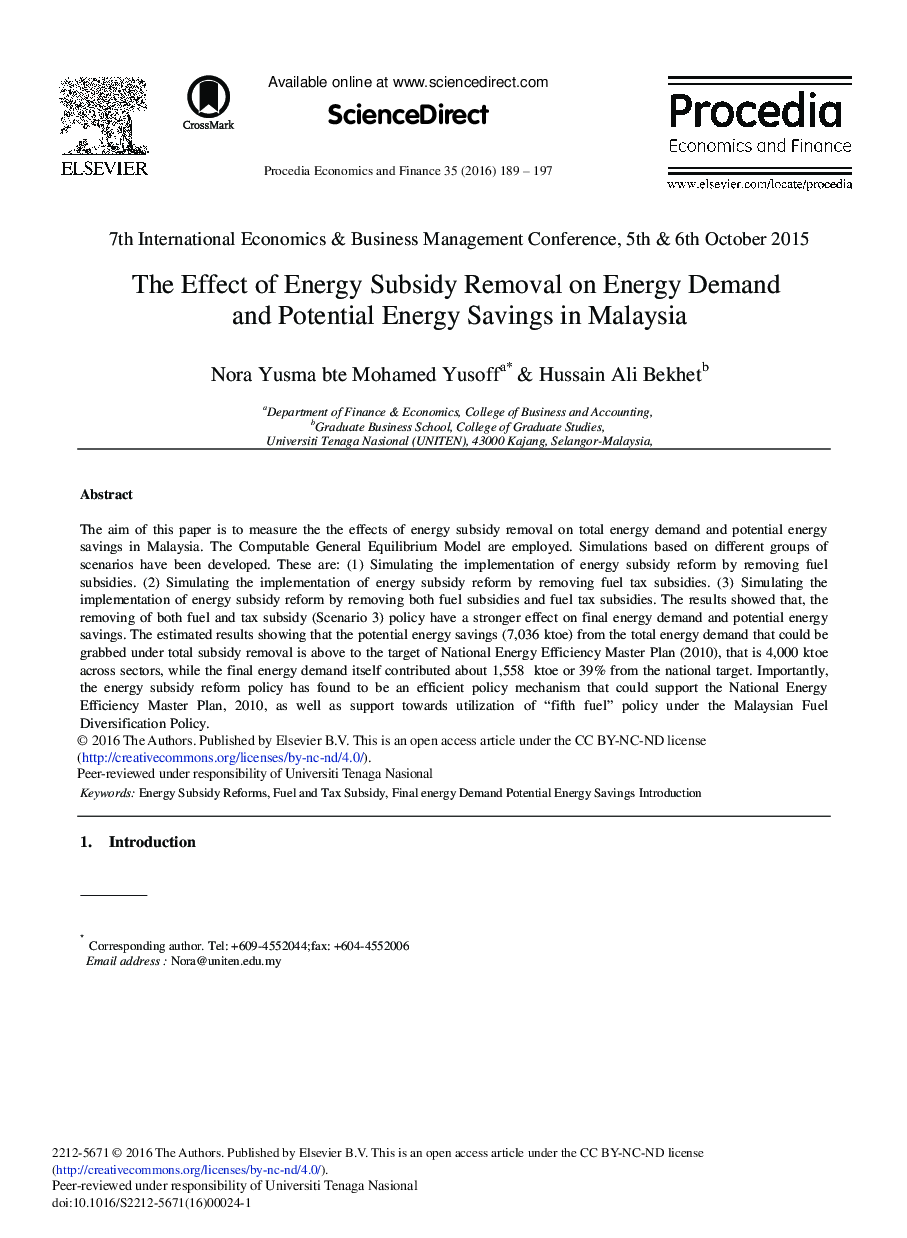| Article ID | Journal | Published Year | Pages | File Type |
|---|---|---|---|---|
| 979838 | Procedia Economics and Finance | 2016 | 9 Pages |
The aim of this paper is to measure the the effects of energy subsidy removal on total energy demand and potential energy savings in Malaysia. The Computable General Equilibrium Model are employed. Simulations based on different groups of scenarios have been developed. These are: (1) Simulating the implementation of energy subsidy reform by removing fuel subsidies. (2) Simulating the implementation of energy subsidy reform by removing fuel tax subsidies. (3) Simulating the implementation of energy subsidy reform by removing both fuel subsidies and fuel tax subsidies. The results showed that, the removing of both fuel and tax subsidy (Scenario 3) policy have a stronger effect on final energy demand and potential energy savings. The estimated results showing that the potential energy savings (7,036 ktoe) from the total energy demand that could be grabbed under total subsidy removal is above to the target of National Energy Efficiency Master Plan (2010), that is 4,000 ktoe across sectors, while the final energy demand itself contributed about 1,558 ktoe or 39% from the national target. Importantly, the energy subsidy reform policy has found to be an efficient policy mechanism that could support the National Energy Efficiency Master Plan, 2010, as well as support towards utilization of “fifth fuel” policy under the Malaysian Fuel Diversification Policy.
